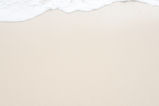Analytical Psychology Press
& Dancing Raven Press

Dora Maria Kalff: Sandplay

Dora Kalff’s classic, originally published in German in 1966, is the foundational book of the psychotherapeutic modality she called “Sandspiel” in German, translated “Sandplay” in English. In sandplay, the therapist quietly witnesses while the patient creates a “world” in a shallow tray half-filled with sand. Miniatures and natural objects, such as stones and shells, are provided for use in these creations.
Sandplay is now practiced around the world. Contemporary readers will discover that Frau Kalff’s wisdom and way of working with children and young adults feels fresh and engaging. Her deep insight into the development of the human psyche, with reference to Eastern contemplative traditions and the work of C. G. Jung, has found support from contemporary neuroscience.
Sandplay is widely integrated into therapeutic work with both children and adults, allowing body-based emotions and memories to emerge in a “safe and protected space.” It has found particular application to trauma, including relief work following natural disasters and in zones of conflict.
In 1985, Kalff and her students founded the International Society for Sandplay Therapy, with branches in many countries. It is a collegial society that provides training and certification in sandplay therapy and is affiliated with the International Association of Analytical Psychology.

From the review by Martin Kalff for
the Journal of Sandplay Therapy
I was so pleased to be able to hold in my hands the newly released hard cover edition of Dora Kalff's classic book on sandplay.... [The] hardcover book evoked in me a sensation of solidity and even preciousness worthy of the material inside.
Moving inside the book we discover that the new edition contains additional images...
Dyane Sherwood put a great deal of effort to provide a better quality of pictures illustrating the nine sandplay cases contained in the book... To find the best way to make the ancient sandplay images a bit clearer reminds me of the work of an archeologist.
The book contains also a new, very readable and modern translation from the German...
... [The] additional footnotes to the original text also help the reader understand better some of the cultural context belonging to the different time when the book was originally written.
It is a great gift that the book has been made available again in an inspiring new edition with some new features which can make it attractive also for persons who already own the previous editions. It certainly has the potential to motivate both newly interested persons and also established practioners to undertand and validate the origins of sandplay in a fresh way."
Journal of Sandplay Therapy 29:3 (2020)
Dora Maria Kalff (1904-1990) was a major contributor to the development of psychotherapeutic work with children.
Frau Kalff was trained as a classical pianist, and she studied Latin, Greek, Sanskrit, and Chinese, in addition to modern European languages and English. She and her Dutch husband were serious collectors of Asian art, and she later became a student of Eastern meditative traditions, including the study of Zen in Japan.
Following the Nazi invasion of Holland, she fled with her young son to her native Switzerland. There she came personally into contact with the Swiss psychoanalyst C. G. Jung and his school of Analytical Psychology. Jung and his wife, Emma, recognized Frau Kalff’s deep rapport with children, and they encouraged her to become a child analyst.

Frau Kalff teaching students in her home in Zollikon, Switzerland 1980s
(Photograph courtesy of Betty C. Jackson)
Kalff was drawn to the work of Margaret Lowenfeld, a British physician who had founded The Institute for Child Psychology in London. Kalff spent a year studying with Lowenfeld in London, where she came into contact with the British analyst, Donald Winnicott and was influenced by his work.
In the 1950’s, Frau Kalff originated a method she called “Sandspiel” in German, translated “Sandplay” in English. Sandplay was based on Margaret Lowenfeld’s “World Technique,” which used a tray half-filled with sand and tiny figures and natural objects (such as shells and stones), in which the child could create a “world.”
Dora Kalff’s approach is much more than a “method.”
It is a profound philosophy and practice of healing, applicable to all therapy not only Sandplay.
She based upon Eastern meditative traditions, the work of C. G. Jung, her rich life experience, and her capacity to relate empathically to the inner lives of children and young adults.